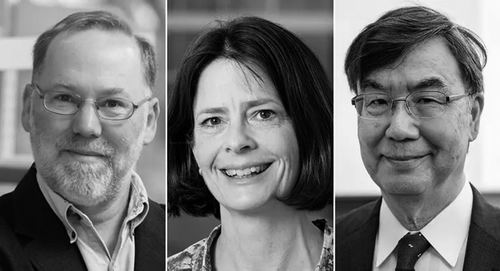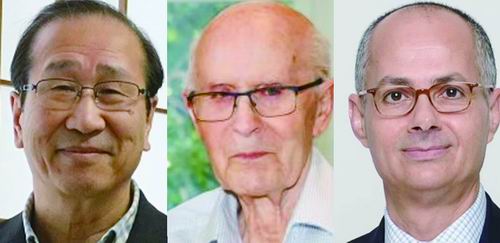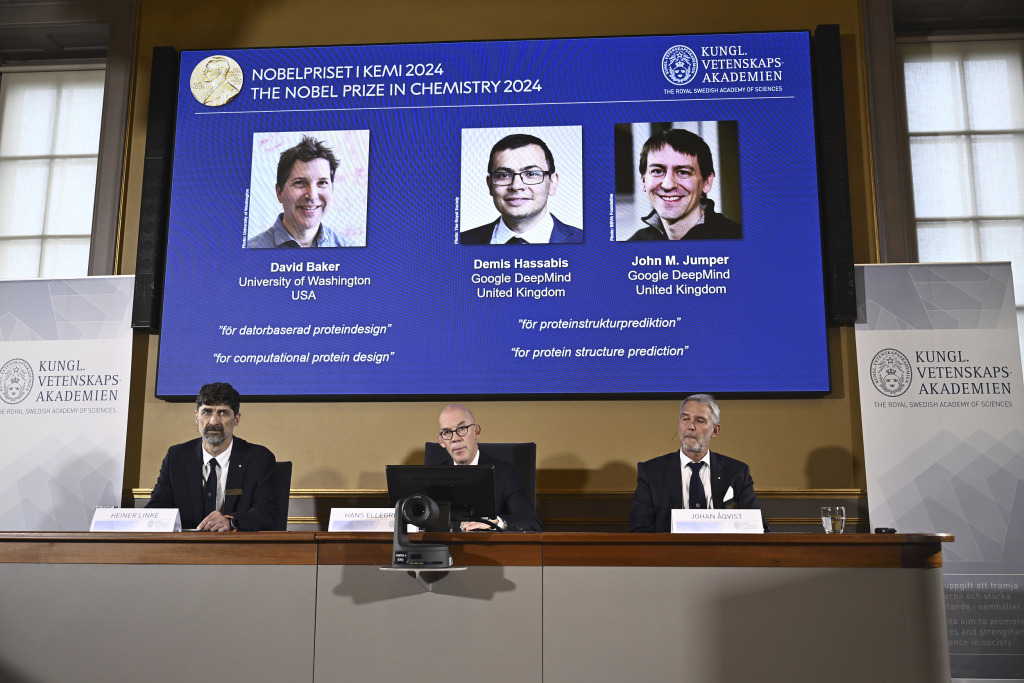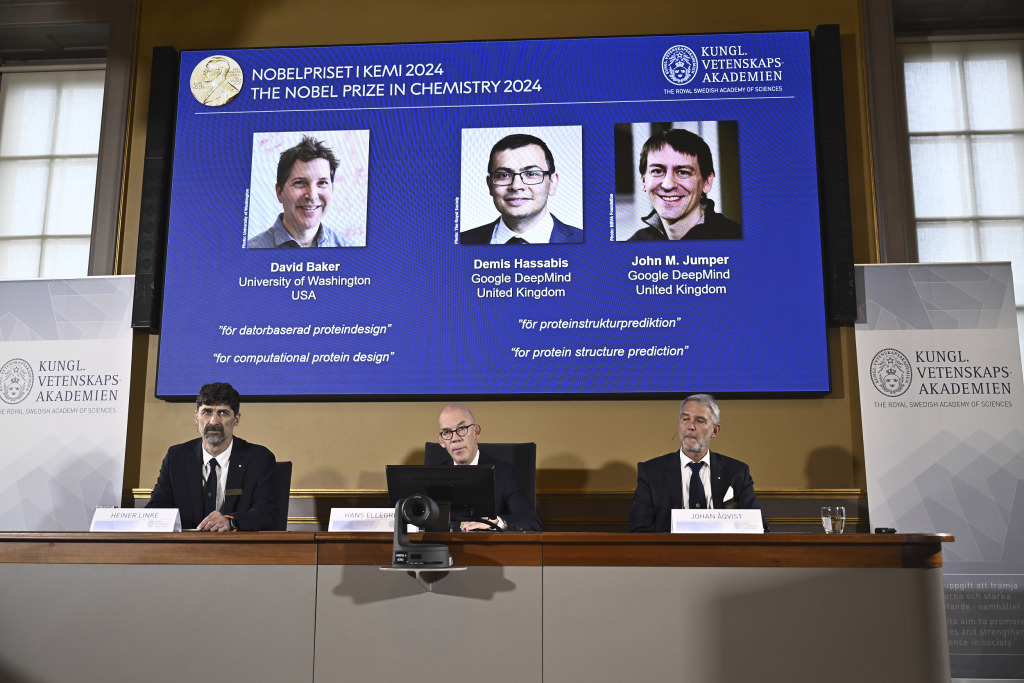

Fred Ramsdell (left), Mary E. Blenko (center), and Shifumi Sakaguchi.
"None of them were predicted, but they truly deserve the award." On October 6th, after the 2025 Nobel Prize in Physiology or Medicine was announced, the China Science Daily livestream was momentarily gripped by an air of "upset." But soon, several commentators agreed that this research, which revealed the mechanisms of immune homeostasis, was worthy of a Nobel Prize, saying, "It's just a matter of time."
The 2025 Nobel Prize in Physiology or Medicine was awarded to American scientists Mary E. Brunkow and Fred Ramsdell, and Japanese scientist Shimon Sakaguchi, for their discoveries in the field of peripheral immune tolerance. It's worth noting that all three scientists were relatively unknown pioneers in science before receiving the Nobel Prize.
A little unexpected, but well-deserved
China Science Daily: What do you think about the 2025 Nobel Prize in Physiology or Medicine?
Zhou Xuyu, a researcher at the Institute of Microbiology, Chinese Academy of Sciences : "It was quite surprising. This is because in 2017, this field had already won the Kraft Prize, a Nobel Prize equivalent, also awarded by the Royal Swedish Academy of Sciences. The academic community generally believed that the chances of winning a Nobel Prize after this prize were slim. The scientists who won that prize included Sakaguchi Shifumi and Ramsdell."
Hu Zhiyuan, a researcher at the National Center for Nanoscience and Technology of the Chinese Academy of Sciences , said: "After graduating with a Ph.D. from the Johns Hopkins University School of Medicine, I went to the Institute for Systems Biology (ISB) in Seattle, Washington, and became a colleague of Blenko. I was overjoyed to hear Blenko win the award."
Professor Qi Hai, Executive Vice Dean of Tsinghua University School of Medicine, stated: "This award is well-deserved and a popular choice; it was only a matter of time." Although many in the field had previously predicted that this year's award might favor clinical medicine, the discoveries made by Sakaguchi and others have had far-reaching impacts that transcend the simple exploration of physiological mechanisms.
Huang Bo, professor at the Institute of Basic Medical Sciences, Chinese Academy of Medical Sciences : "I'm not particularly surprised. The person who made the greatest contribution should be Sakaguchi Shifumi, and this is also the consensus within the field."
China Science Daily: Everyone may be surprised that Blenco won the award and was ranked first. How do you understand it?
Hu Zhiyuan : She's very good at computing, and ISB was founded on computing, with significant investments in genetic data, software engineering, and computing resources. Blenko's award citation reveals that in a 2001 study published in Nature Genetics, she discovered a gene called Foxp3 that causes disease in mutant mice, a site crucial for regulatory T cells.
They were once unknown and did scientific research part-time
China Science Daily: Have you had any contact with any of the award winners? What impression do they leave on you?
Zhou Xuyu : I've had many interactions with Ramsdell and Sakaguchi. We've collaborated, but also competed. For example, when I was doing research in the United States, I collaborated directly with Ramsdell's laboratory. With Sakaguchi, we were more of a rival. He often served as a reviewer for our manuscripts. He's a very serious and rigorous scientist with extremely high standards for paper quality.
China Science Daily: What qualities of Sakaguchi Shifumi particularly attract you?
Qi Hai : Sakaguchi Shifumi is a typical Japanese scientist—modest and reserved, yet incredibly determined, even somewhat stubborn. His research initially faced widespread disapproval, and he even struggled to find a formal teaching position. But he firmly believed the answers he sought existed, and regardless of external skepticism, he remained single-mindedly on that path.
This reminds us of a profound truth: important scientific discoveries are often initially viewed as heretical, uninteresting, or not "real science." You must have the courage to face doubts and endure long periods of indifference and denial.
Huang Bo : I've interacted with Sakaguchi Shiwen more than once at past offline academic events. When attending academic conferences, Sakaguchi Shiwen is always with his wife and politely introduces her to others. You can sense their close relationship. Sakaguchi Shiwen isn't a heavy drinker, and his students love to help him keep him from drinking.
Zhou Xuyu : Ramsdell and Sakaguchi give people a completely opposite impression. Sakaguchi is a very low-key and rigorous Japanese scientist, while Ramsdell is a very open and enthusiastic American.
What is most admirable about Sakaguchi Shiwen is his dedication to scientific research. In the 1950s and 1960s, the concept of suppressor T cells was a hot topic in immunology. However, by the 1980s, the concept was largely dismissed, even dismissed as pseudoscience. Despite this, Sakaguchi Shiwen persisted in his research, a remarkable feat, despite the fact that almost no one believed in the concept of suppressor T cells.
In his landmark 1995 paper, Sakaguchi discovered that the surface molecule CD25 could serve as a key marker for isolating regulatory T cells. However, the submission process was not smooth, and the paper was ultimately published in Immunology (with an impact factor of approximately 5-6). By today's standards, this initial publication seems unremarkable, but he persevered.
Sakaguchi Shifumi faced a particularly difficult situation early on. He lacked his own laboratory, and as a clinician, he had to devote half his time to seeing patients, leaving him to pursue research part-time. Even after the publication of that landmark paper, he faced skepticism. It wasn't until the Foxp3 gene was identified by Ramsdell and linked to regulatory T cells that he gradually gained recognition. He appears to be a very ordinary person, but his work is exceptional, with high-quality, reproducible publications that embody the fundamental principles of a scientist.
China Science Daily: What kind of scientist is Ramsdell?
Zhou Xuyu : Ramsdell had a sunny disposition, a typical American scientist. When he got a piece of good data, like identifying Foxp3, he would happily run out to celebrate. The few times I met him were during breaks in academic conferences or at a bar. He had a close relationship with my advisor, Jeff Bluestone, and they later co-founded Sonoma Bio, a company dedicated to developing next-generation therapies for autoimmune diseases using regulatory T cells.
China Science Daily: What kind of impression do you have of Blenco?
Hu Zhiyuan : I believe that many people had not heard of Blenko before this. First, she is not a "big PI" in a popular field; second, she is indeed very low-key and can be said to have always been unknown.
At the time, Blenko was just one of the one or two hundred "ordinary researchers" at ISB. Everyone applied for research projects and sought funding on their own, striving to conduct research in areas of interest. She focused on identifying the genes that cause certain diseases, and subsequent research is also looking for other targets.
Solved the core scientific problems
China Science Daily: Please explain in plain language what core scientific problems this year's winning results have solved?
Li Zhizhong, visiting professor at the School of Pharmacy of Peking University and science writer : The core of this Nobel Prize-winning achievement is the discovery and research of negative regulators of the immune system, or the "security guards" of the immune system - regulatory T cells, which can prevent immune cells from attacking the human body.
In the human body, the immune system attacks antigens upon recognizing them. Normally, these antigens come from foreign pathogens such as bacteria and viruses. However, the immune system sometimes recognizes antigens that originate in the body. Regulatory T cells (regulatory T cells) are designed to prevent the body's immune cells, particularly T cells, from attacking the body.
In 1995, Sakaguchi Shifumi made a key discovery through animal experiments: mice with autoimmune diseases could be transplanted with cells from normal mice to control their overactive T cells. The transplanted normal T cells contained some inhibitory T cells, which protected the body from autoimmune diseases and were named regulatory T cells.
In 2001, Blenko and Ramsdell revealed why a certain type of mouse is particularly susceptible to autoimmune diseases. These mice have a mutation in a gene they named Foxp3. They also showed that mutations in the corresponding gene in humans cause a severe autoimmune disease.
China Science Daily: What is the significance of this breakthrough to the field?
Qi Hai : The "imperfect" marker CD25 became the key that opened the door to a new world. For the first time, it allowed scientists around the world to truly isolate, enrich, and study this mysterious group of cells. Functional experiments could be performed, cell transfusions could be performed, and their suppressive capacity could be verified. Without this breakthrough, the entire field of peripheral tolerance might have remained groping in the dark for much longer. This fundamental discovery has already spawned over 250 clinical trials worldwide.
The application prospects are broad and provide a lot of inspiration for scientific research
China Science Daily: Where do you think the scientific value of this award-winning achievement lies?
Lei Lei, senior editor-in-chief of Wiley : "This work has extraordinary scientific significance. It not only deepens our understanding of the basic laws of life, but also provides key theoretical explanations and potential therapeutic targets for a variety of autoimmune diseases with unknown causes, such as type 1 diabetes, rheumatoid arthritis, and multiple sclerosis."
Li Zhizhong : This teaches us that everything has a balance and that we shouldn't go to extremes. This perspective on balance has important implications for the public's understanding of the immune system—the human body has evolved this balance with great difficulty, so we shouldn't blindly pursue immunity.
Huang Bo : The key lies in a shift in perspective. Previously, people believed that T cells were solely responsible for immune function. However, this discovery has led to the realization that T cells can also suppress immunity. Just as traditional Chinese philosophy emphasizes the balance of yin and yang, the body's immune system also requires balance.
China Science Daily: Research on regulatory T cells has not yet shown much in clinical applications. What do you think about this?
Lei Lei : Currently, therapies based on regulatory T cells have not yet been widely used in clinical practice, which precisely demonstrates the forward-looking nature of the Nobel Prize. The Nobel Committee doesn't just reward established applications; it also values the potential of scientific discoveries. Research such as mRNA vaccines and CRISPR gene editing, which originated from basic research, has now demonstrated tremendous clinical value.
Li Zhizhong : A major discovery often takes a long time to be recognized. This research took over 30 years from discovery to award – basic research requires patience and persistence.
Zhou Xuyu : Regulatory T cells have a wide range of applications. For example, low-dose interleukin-2 therapy, currently widely used in clinical practice in China, is based on balancing immune responses by regulating the number and activity of regulatory T cells.
China Science Daily: What inspiration do the stories of the three winners provide for current scientific research and young scientists?
Zhou Xuyu : What struck me most deeply is the importance of daring to face challenges. When I first arrived in the United States, my mentor told me, "Dare to do what you want to do." I particularly hope that young people will have the courage to challenge authority, established rules and regulations, and what we call "conclusions" or "dogmas." They aren't always right, and perhaps your next discovery could land you on the Nobel Prize podium. The experiences of this year's laureates are a testament to this.
Lei Lei : The three laureates, especially Sakaguchi Shiwen, have demonstrated extraordinary courage in their scientific research. In a niche field largely unappreciated and underappreciated, he dared to pursue "awkward" and even "inappropriate" questions. This courage to persevere in the face of solitude is the most precious spark of scientific breakthroughs.
Today's Nobel Prize story is, at its core, a profound allegory about balance. Just as the immune system maintains a delicate, dynamic balance between attack and tolerance, isn't the life of a researcher similar? Scientists, too, must persevere in the face of adversity, maintain focus amidst turmoil, and find their own rhythm between goals and reality, between ideals and compromise.
As editors, this Nobel Prize reminds us that when reviewing manuscripts, we must not only assess the immediate impact of research but also its long-term potential. Whether it's Nobel Prize selection or journal manuscript selection, we should adopt a more open and comprehensive perspective to respond to global challenges that transcend single disciplines.
Science is an orderly relay. This isn't the first Nobel Prize in immunology, and I doubt it will be the last. Each generation of scientists stands on the shoulders of giants and continues to advance.


